Yunnan tin card raw bean batch occurs bean price Yunnan authentic small grain coffee Arabica tin truck
For professional baristas, please follow the coffee workshop (Wechat official account cafe_style)
| 01 | production area profile |
Small-grain coffee is suitable for growing in the mountains at an altitude of 800 to 1800 meters. If the altitude is too high, it will taste sour, and if it is too low, it will taste bitter. Small grains of coffee are mostly planted in dry and hot valleys about 1100 meters above sea level, so they are moderately sour, rich and mellow. There is a unique environment suitable for the growth of small seed coffee in many areas of Yunnan, and the quality of small seed coffee is excellent.
The planting areas are mainly distributed in Lincang, Baoshan, Simao, Xishuangbanna, Dehong and other states. The average temperature of Baoshan is 21.5℃, and the highest is 40.4℃, which is basically frost-free all the year round. It is recognized as the best producing area of small-grain coffee. The small-grain coffee cultivated here is famous at home and abroad for its strong but not bitter, fragrant but not strong, well-proportioned small noodles, mellow and fruity. International Coffee Organization tasting experts evaluate Yunnan coffee as the highest quality coffee in the world, such as Colombian wet-processed small-grain coffee.
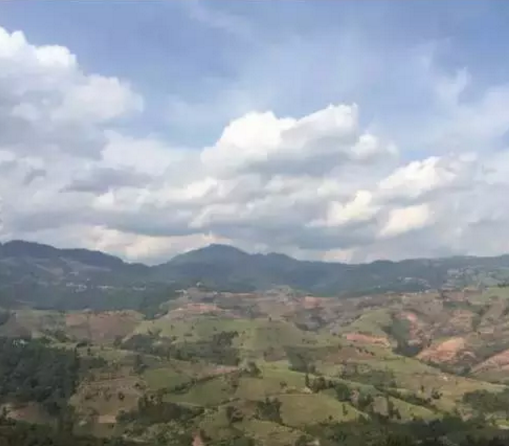
Planting height:
For Arabica, 1200 is a watershed in quality. You will find that few people talk about why Hainan coffee has been in the non-mainstream and can only be sold as tourist souvenirs, one because it is Luodou, and the other is because Hainan is located at sea level, which is 300m below in most places. the tip of Wuzhishan in the middle is 1800, and the urban area is only 320th. Hainan can grow some souvenir coffee, but there must be more than enough to grow a good Arabica.
Since planting height is the basic factor, large mountainous areas in Yunnan can reach more than 1000. Kunming is 1895 meters above sea level, Baoshan is 1653.5 meters above sea level, Dali is 1976 meters above sea level, Chuxiong is 1773 meters above sea level, and Dehong averages 800 to 1500 meters above sea level. Diqing averages 3380 meters above sea level. The altitude is high, and considering the temperature, generally speaking, the golden coffee belt is between the Tropic of Cancer, the reason is that the probability of frost is very high, and the coffee tree dies when it comes out of the line. On the other hand, Yunnan has a Gaoligong Mountain to the north of Baoshan, which blocks the influence of the cold current in Siberia in winter, and a large number of mountains form a small regional climate that protects the growth of coffee.
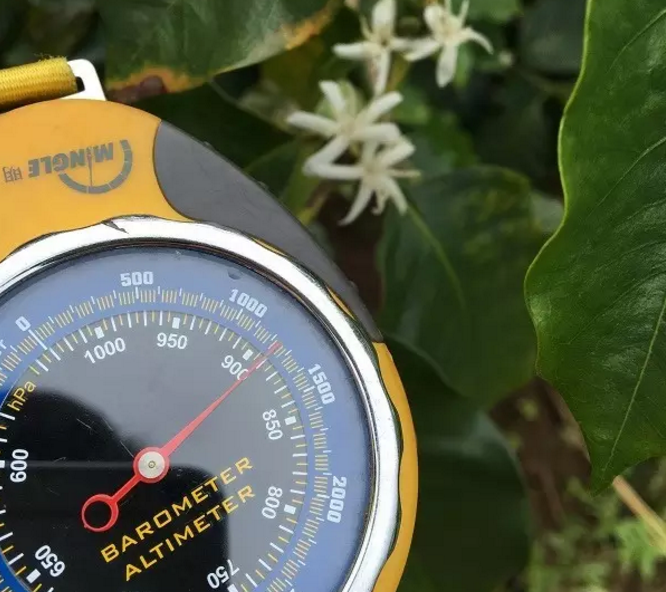
02 | processing method
Use a peeling machine to separate most of the pulp from the coffee beans, then guide the shelled beans to a clean sink, soak them in water and ferment to completely remove the residual pulp layer. In the past (about five years ago), washing was often the first choice for good coffee bean treatment.
Through water treatment, unripe beans and defective beans are selected because of buoyancy, and the fermentation process is easier to control, so the flavor is not mixed like sun beans, but shows obvious acidity, complexity and cleaner (without any negative flavor, such as astringency or sharpness). But it is also because it is too "clean" and the richness of the flavor is a little weaker.
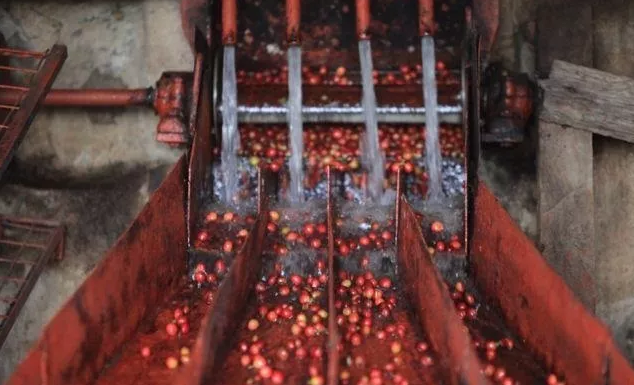
03 | Analysis of raw beans
Small grains of coffee
Yunnan small-grain coffee, Rubiaceae, coffee genus, the planting area is mainly distributed in Lincang, Baoshan, Simao, Xishuangbanna, Dehong and other states. Small grains of coffee are native to Ethiopia or Arabian Peninsula.
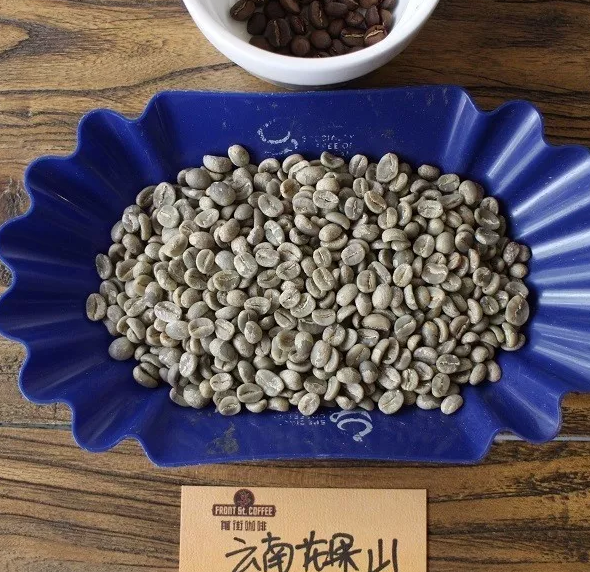
Variety
Typica: the oldest native variety in Ethiopia and southeastern Sudan. All Arabikas are derived from Tibika. The flavor is elegant, but the physique is weak, the disease resistance is poor, the fruit yield is less. Excellent manor beans such as the Blue Mountains of Jamaica, Manning of Sumatra and Kona of Hawaii all belong to Tibika. Tiebika top leaf is red copper, called red top coffee, Tibika belongs to Arabica.
Coffee tree opposite leaves are long oval, smooth leaves, the end of the branch is very long, few branches, and the flowers are white, open at the base of the petiole connecting the branch. The ripe coffee berries look like cherries and are bright red with sweet flesh and contain a pair of seeds, namely coffee beans (Coffee Beans).
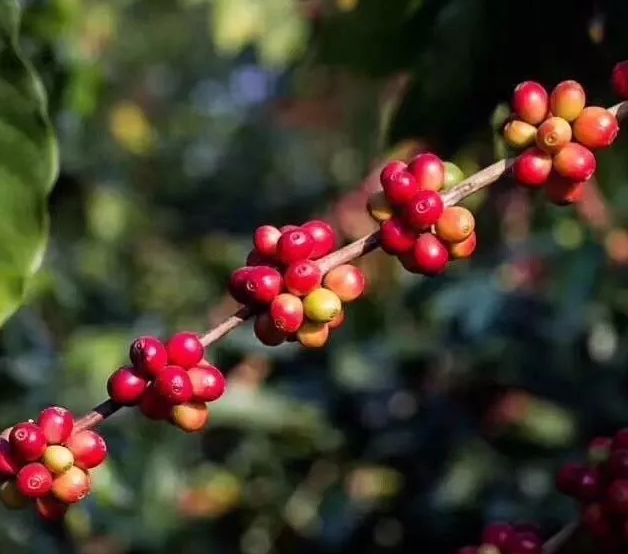
Typica is one of the oldest native varieties in Ethiopia. The top leaves of Tiebika are bronzed and the bean body is oval or thin. It has elegant flavor, but weak physique, poor disease resistance and low fruit yield.
Typica is one of the oldest varieties of Arabica coffee discovered today, and the other is called bourbon. The Arabica species originated in Ethiopia, and it still exists today.

However, it grows in the highlands of the original rainforest. The iron pickup planted in Java was a Dutch gift to Father Louis XIV of France and survived in Persian gardens. The seeds were brought to French Martinique by the French in 1720.
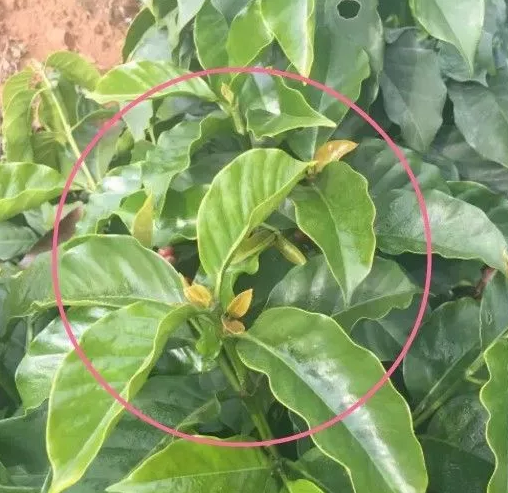
The Ironpika bean is slender, the tree is tall, the fruit is oval, and the branches are slightly inclined. The four iron pickups are slender and open, tilting at an angle of 50 to 70 degrees. The coffee yield of each tree is very low, but the cup test score is very high.
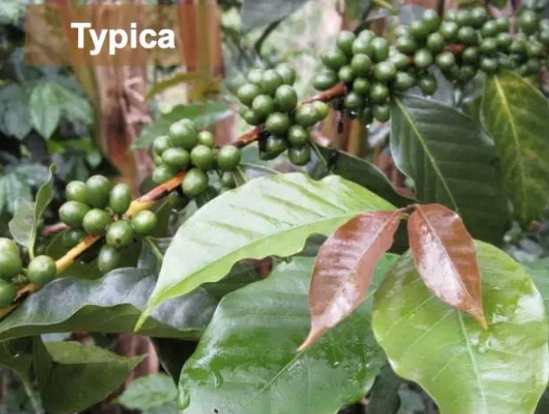
04 | Baking analysis
This coffee is intended to be roasted in a moderate slow manner, which can best reflect its round and smooth, full-bodied flowers and fruit aromas.
Roaster Yangjia 600g semi-direct fire
Put the furnace temperature to 200 degrees Celsius, adjust the firepower to 160 degrees after opening the throttle for 30 seconds, the throttle remains unchanged, adjust the firepower to 168 degrees at the return point of 1: 33 degrees Celsius, at this time the bean table turns yellow, the smell of grass disappears completely, the dehydration is completed, the firepower is adjusted to 130 degrees, and the throttle is adjusted to 4 degrees.
On the 8th '45th floor, ugly wrinkles and black markings appear on the bean surface, and the smell of toast obviously changes to the smell of coffee, which can be defined as a prelude to an explosion. At this time, listen clearly to the sound of the explosion point, to 9: 07 "start an explosion, adjust the firepower to 80 degrees, the throttle should be fully opened 5 (the firepower should be very careful, not so small as to be free of bursting sound), 3 degrees 00" after an explosion, 198 degrees into the pan.
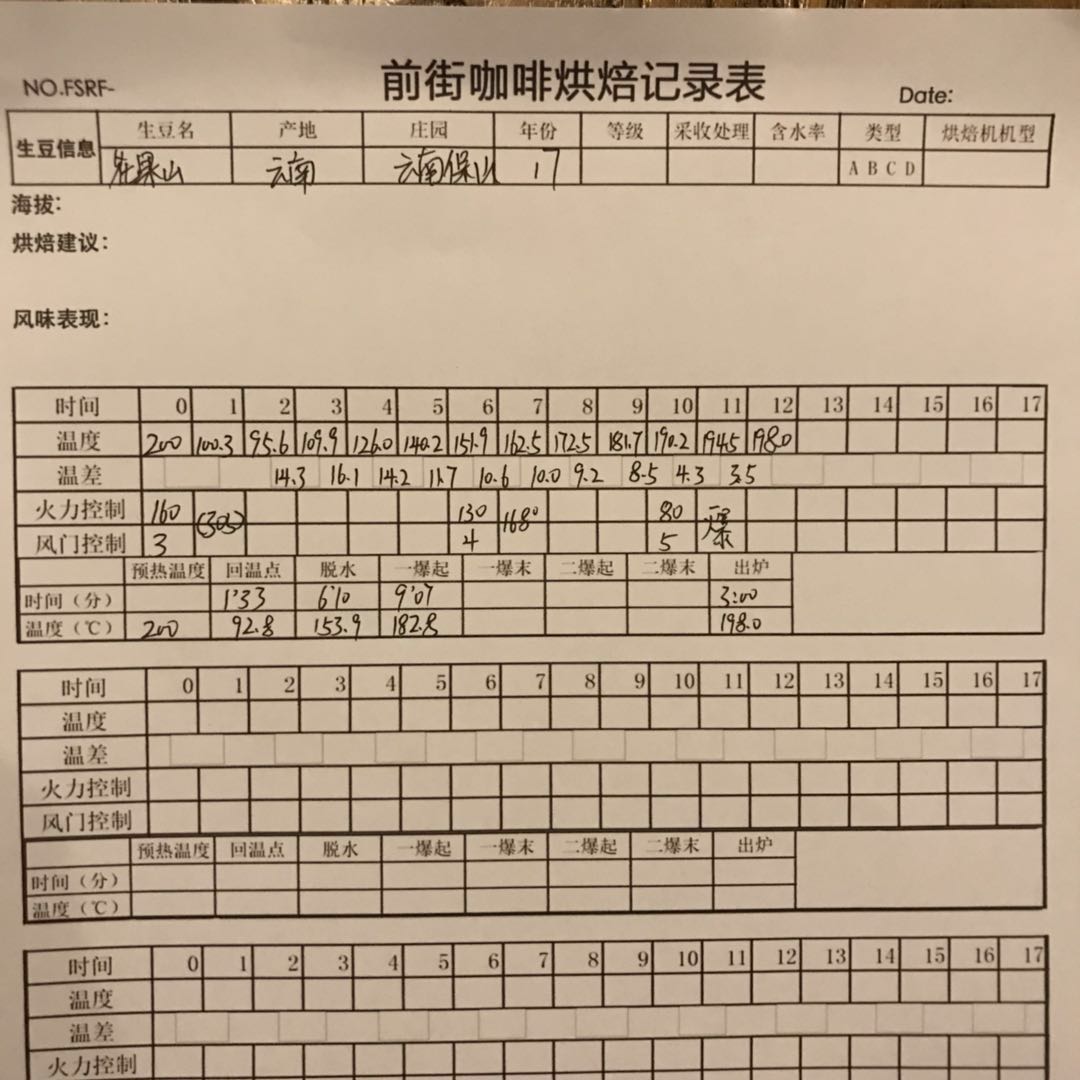
Cup test:
Dried fragrance: pear fruits (pear-fruit), vanilla (vanila-like), honey (honey-like), peach tea (peach tea), ripe oranges (ripe orange), jasmine (jasmine hints)
Wet fragrance: nutty (nutty), milk chocolate (milky chocolate), herbs (herbal-floral)
Palate: supple in the mouth, aroma of Asian herbs, lively and bright sour taste, good balance between cheeks, soft acidity, mellow balance, rich layers, obvious taste of dark chocolate, honey and sucrose, brown sugar flavor after complete cooling.
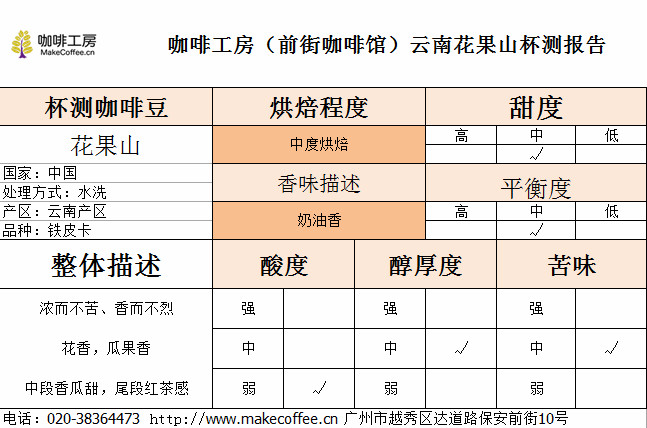
05 | Cooking analysis
Recommended cooking methods: siphon, hand flushing
Degree of grinding: 4 (Fuji R440)
Water temperature: 90 °C
V60 filter cup, 15g powder, water temperature 90 degrees, grinding 4, water powder ratio close to 1:15
Steaming in 30 grams of water for 30 seconds
Segment: water injection to 99ml cut off, slow water injection to 230ml
31-99-100
Other suggestions for trickling extraction:
Normal pressure, recommended grinding degree of 3.5-4 / water temperature 90 °C
Philharmonic pressure, recommended 2.5 grinding degree, water temperature 88 °C
Hand punch: 3.5 degree of grinding, water temperature 89 °C
Taobao connection: https://item.taobao.com/item.htm?spm=a1z10.5-c.w4002-15673140460.29.22e607bd6aEThN&id=535615170690
Important Notice :
前街咖啡 FrontStreet Coffee has moved to new addredd:
FrontStreet Coffee Address: 315,Donghua East Road,GuangZhou
Tel:020 38364473
- Prev
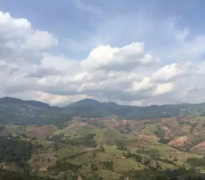
Yunnan small grain Baoshan old variety iron pickup Yunnan real Arabica series iron pickup
For professional baristas, please follow the coffee workshop (Wechat official account cafe_style) 01 | A brief introduction to the producing area: small-grain coffee is suitable for growing in the mountains at an altitude of 800,1800m. If the altitude is too high, it will taste sour, and if it is too low, it will taste bitter. Small grains of coffee are mostly planted in dry and hot valleys about 1100 meters above sea level, so they are moderately sour, rich and mellow. Many areas in Yunnan are suitable for small.
- Next
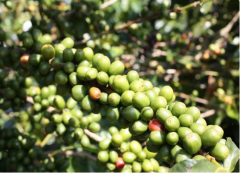
Introduction to the treatment of coffee beans with selected micro-batch honey at Don Mario Mario Farm in Costa Rica
For the exchange of professional baristas, please follow the coffee workshop (Wechat official account cafe_style) Costa Rica Don Mario Mario Farm (honey treated beans) Costa Rica is the most stable, best and conservative coffee in Central America. As can be seen from the old iron buckets in the World Cup, coffee production has a very long history, as early as 1800 in the 19th century.
Related
- Detailed explanation of Jadeite planting Land in Panamanian Jadeite Manor introduction to the grading system of Jadeite competitive bidding, Red bid, Green bid and Rose Summer
- Story of Coffee planting in Brenka region of Costa Rica Stonehenge Manor anaerobic heavy honey treatment of flavor mouth
- What's on the barrel of Blue Mountain Coffee beans?
- Can American coffee also pull flowers? How to use hot American style to pull out a good-looking pattern?
- Can you make a cold extract with coffee beans? What is the right proportion for cold-extracted coffee formula?
- Indonesian PWN Gold Mandrine Coffee Origin Features Flavor How to Chong? Mandolin coffee is American.
- A brief introduction to the flavor characteristics of Brazilian yellow bourbon coffee beans
- What is the effect of different water quality on the flavor of cold-extracted coffee? What kind of water is best for brewing coffee?
- Why do you think of Rose Summer whenever you mention Panamanian coffee?
- Introduction to the characteristics of authentic blue mountain coffee bean producing areas? What is the CIB Coffee Authority in Jamaica?

